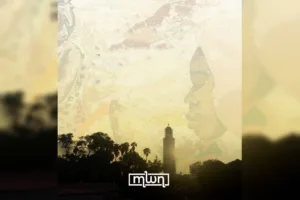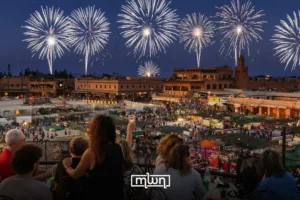Rabat- Moroccan photographer and former engineer Seif Kousmate participated for the first time in the annual French photography festival “Les Rencontres d’Arles” with “Waha,” a series about the multiple challenges that Moroccan oases face.
Kousmate’s work “Waha” is an artistic contribution to the international discussions about climate change’s impact on Earth.
For Kousmate, the international community tends to focus on global warming consequences on northern regions, so he decided to move the spotlight to southern regions by exposing the ongoing extinction of Morocco’s oases.
As palm groves dry up and water becomes scarce. A Greenpeace campaign in 2019 warned about the survival of Moroccan oases which are facing increasing cycles of drought.
Morocco has lost two-thirds of its 14 million palm trees over the last century, according to official figures.
Oases are also suffering from tourism practices exploiting their tired leftovers by selling an idealistic picture to foreigners.
“I started to see oases’ progressive degradation,” Kousmate told Morocco World News.
In 2020, the Moroccan photographer was ready to go out in the field but the Coronavirus pandemic slowed his departure for a few months. He started to take in September 2020 pictures and move from one oasis to another.

Waha (Oasis) exhibition, as part of the 2022 Louis Roederer Discovery Prize.
Before shooting, Kousmate explored the history of Moroccan oases’ visual representation. During the exploration, he mainly found pictures framed by an orientalist vision, displayed on postcards, or in old photos taken by French military members.
The Moroccan photographer decided to shift the orientalist narrative and give a voice back to the local communities.
Kousmate built a bridge between his audience and the oases’ local populations by exposing personal stories in short texts completing their portraits.
One piece of “Waha” shows two young brothers from the Tighmert oasis, Hassan and Abderrahman, lying down facing the camera.
Abderrahman “sees his future elsewhere and considers that the land of the oasis does not pay for the effort you put into it,” wrote Kousmate in the caption. Abderrahman’s discouragement reflects the local youth mindset who have access to the internet and see how life is elsewhere.
Kousmate said that usually, the family’s younger members move to the closest city to work and help the rest of the family who’s staying in the oasis.
A classic photographic approach was not powerful enough to highlight the emergency surrounding Moroccan oases.
“I wanted to recreate the deterioration of the environment on the photographic material to build an emotional narration,” Kousmate explained.
In his creative process, he burned some pictures and put acid on others, covering his photos with hypnotizing purple and orange sparks. While he mixed his printed photos with organic material, dried palm trees, and other plants.
The different artistic practices emphasized the dramatic aspect of the climate situation, that requires quick and efficient action.
As a solution, Kousmate believes that a protective strategy should be adapted in each region, and high-water-consuming crops, like watermelons or bananas, should be avoided around oases.
The National Agency for the Development of Oasis and Argan Zones (ANDZOA) has invested $10.7 billion to preserve the Moroccan oasis and argan zones, according to a 2022 press conference. The official agency planted more than three million palm trees.
Even though “Waha” has already been exhibited in Germany, the US, France, and Morocco, the project is not finished yet, as Kousmate is planning to complete his mapping of photographic oases with a final trip from Figuig to Tinghir.
Read Also: Morocco Invests $10.7 Billion on Oasis and Argan Zones
















